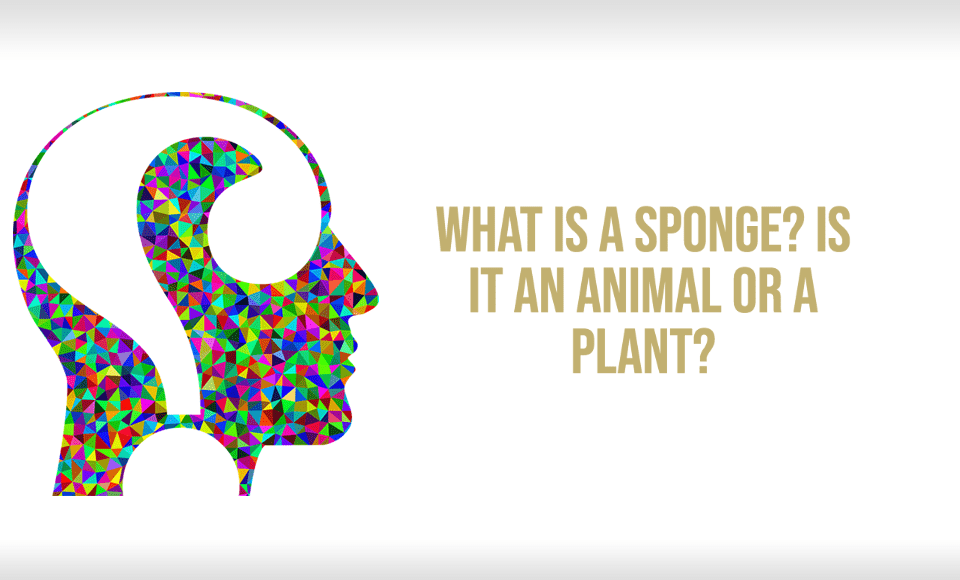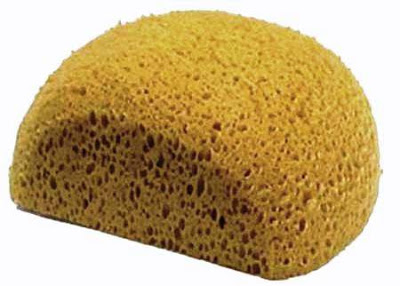The sponge is part of our daily lives. We use it in the kitchen when we wash our dishes, in the shower room when we scrub our skin, in our make-up kits when we apply concealers and have become part of our childhood TV cartoon viewing as SpongeBob SquarePants. However, sponges are more than just body scrubs and dishes cleaner. And unlike SpongeBob, real sponges are neither square nor has a yellow color. They have various colors, shapes, and sizes and are often mistaken as plants.
To answer briefly, sponges are the simplest, multicellular, aquatic animals. They are considered as the oldest animal group belonging to phylum Porifera, which means ‘pore bearer.’ This is the reason why SpongeBob is covered with pores all over his body. Although sponges are multicellular, they lack tissues, specialized digestive organs, nervous, and circulatory systems. Instead, their pores serve as a water transport system that is used for digestion, excretion, and gas exchange. (click here for more details)
Sponges existed since the ancient Earth, with some fossils known to be present during the Precambrian period approximately 600 million years back. It comprises more than 8,500 living species. Just like corals, sponges are fixed, steady aquatic invertebrates with unique anatomy for feeding and reproduction. However, they differ in many features: corals are complex multicellular organisms while sponges have no tissues. Corals are only thriving in saltwater, while sponges can exist in saltwater, freshwater, and estuaries. The skeletal type of sponges helps them adapt to their environment, allowing them to live on rocks, sediments, sand, and mud.
People thought that sponges are plants rather than animals because they do not move, do not have muscles, and internal organs, and only stay in one place where they grow just like plants. Although they lack the features and systems to be considered animals, recent studies have proved that sponges are clearly in the animal group. To account, sponges share fundamental characteristics just like animals such as:
Immune System: Sponges do have a simple immune system. It can identify its body parts by accepting a graft of its flesh and rejects some that belong to other sponge. This rejection can only be stopped using an immunosuppressant. Thus, it shares a biochemical pathway with us that our system used to distinguish self and non-self;
Coordinated movement: Although sponges are immovable, they do have moving parts through their specialized cells called choanocytes. The water enters the spores, and the flagella create water current that pushes the water out;
Sponges are eukaryotes. They have membrane-bounded nuclei containing DNA that are multicellular, and include cell walls that make them belong to the animal kingdom. (click here for more details)
In ecology, sponges are a significant component of the coral ecosystem since they serve as a home for other aquatic organisms such as shrimp, crabs, and algae. They also feed some sponge-eating fish species.
For humans, aside from being a cleaning material, sponges have contributions to the world of medicine. In recent research, scientists found a chemical called ageliferin in the body of the sponge. This chemical is non-toxic and can be used to fight antibiotic-resistant bacteria that causes cough, ear infection, and food poisoning. While further studies and experiments need to conduct to prove this claim, laboratory results showed that some particular robust bacteria were eliminated after the addition of ageliferin, according to Peter Moeller, a chemist at Hollings Marine Laboratory in Charleston, South Carolina, USA. (click here for more details).
For almost 600 million years, sponges have survived different environmental conditions and shown persistence even after the mass extinction of dinosaurs at the end of the Triassic period. However, they are now exempted from dying off due to ocean acidification and sea temperature rise as a result of global warming and climate change. While coral bleaching is widely seen from different regions of the globe, sponges are more resistant and tolerant as compared to them. So there are no worries that they may be out of numbers.
With all the pieces of evidence, there is no doubt that SpongeBob together with his friends Patrick Star (starfish), Squidward Tentacles (squid), Mr. Krabs (crabs), Gary the Snail (sea snail), Sandy Cheeks (squirrel in air-glass dome suit), and Mrs. Puff (pufferfish) is an animal and not a plant!

